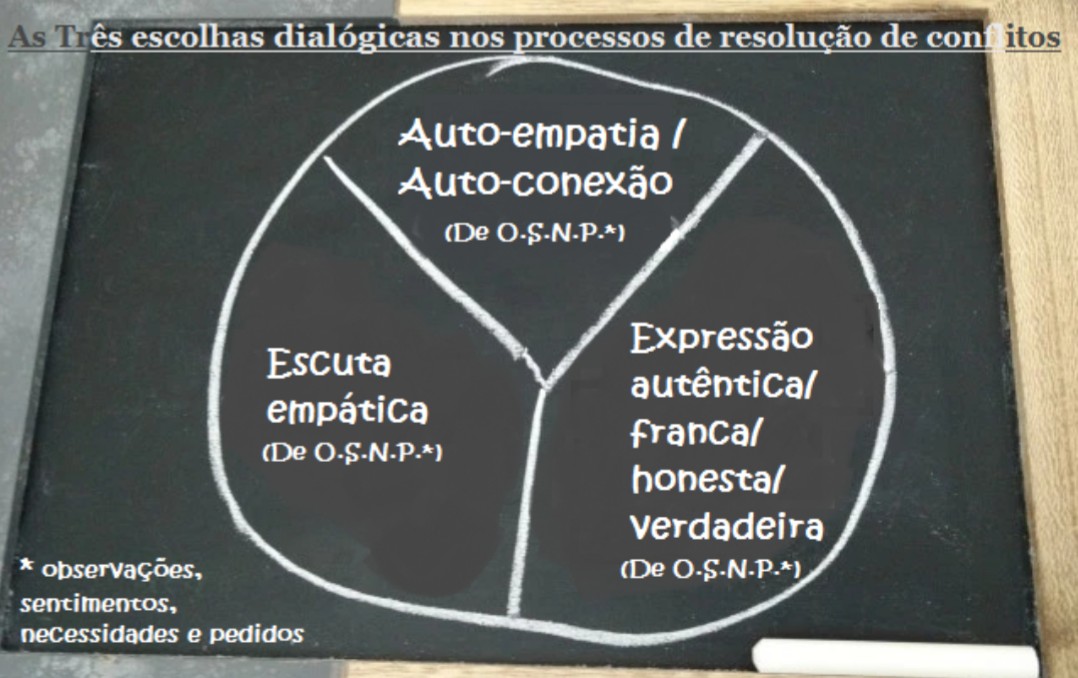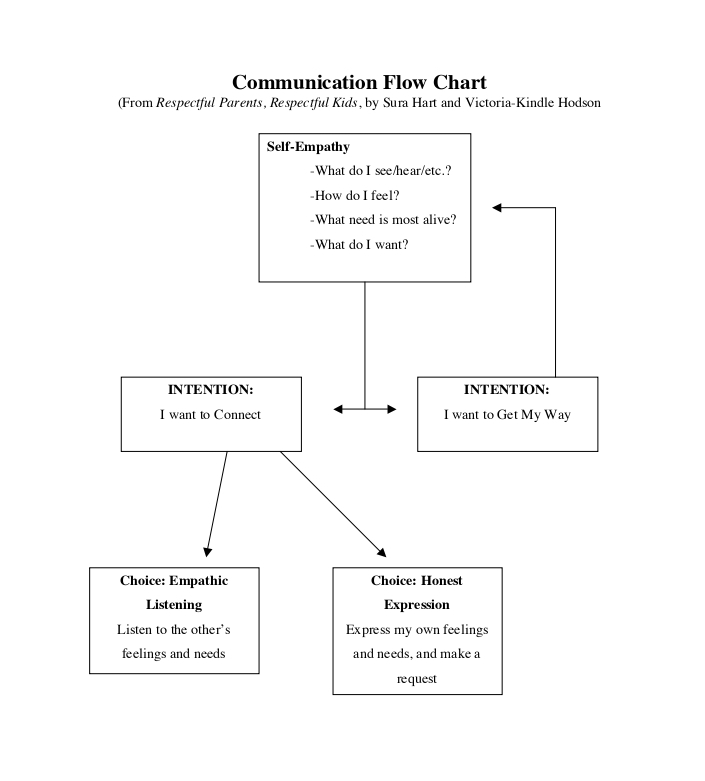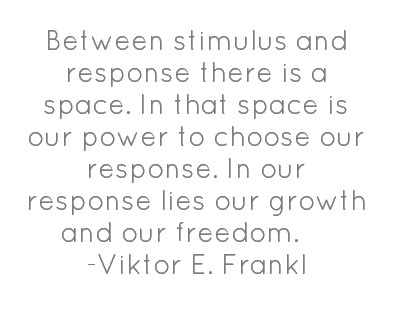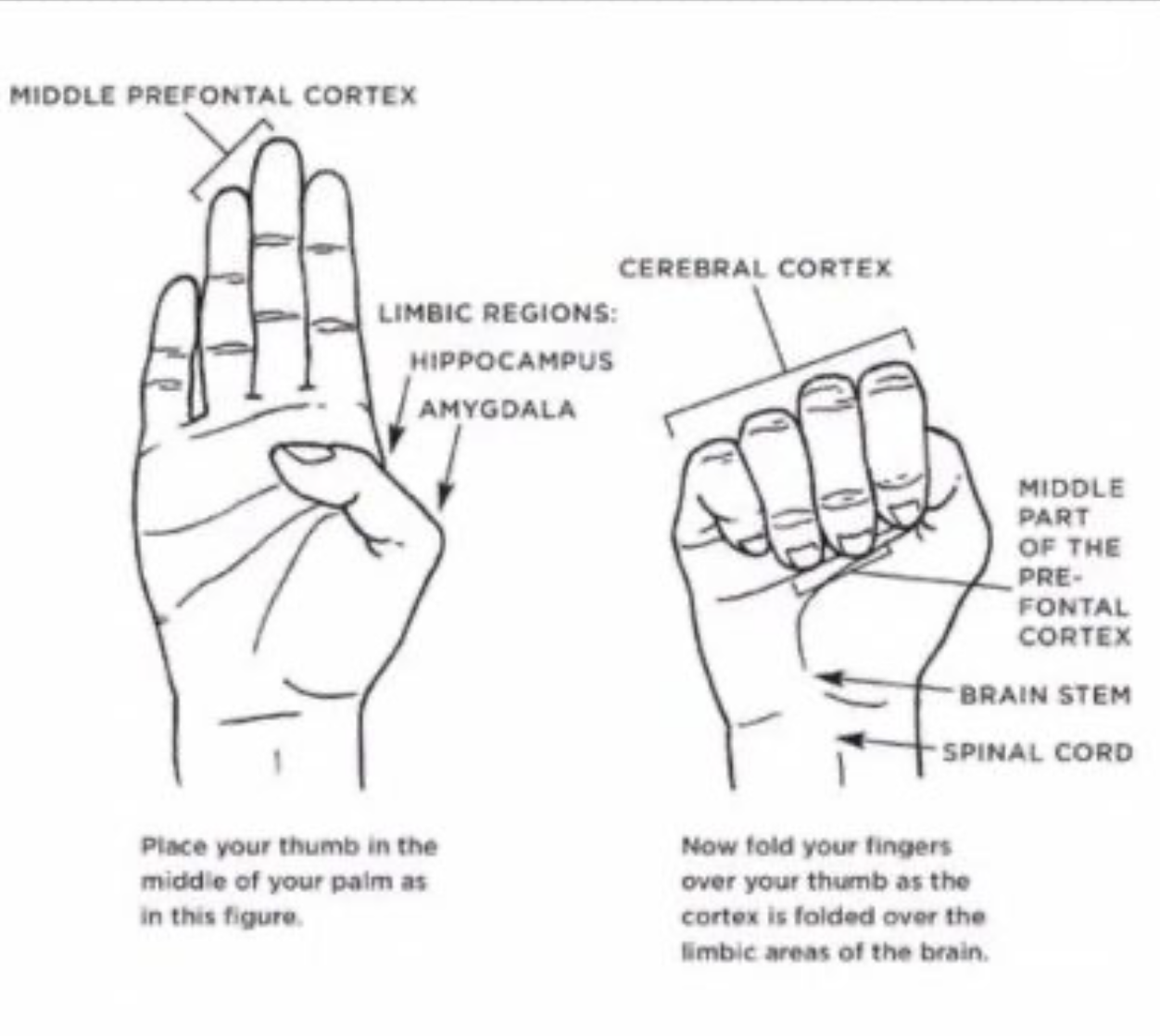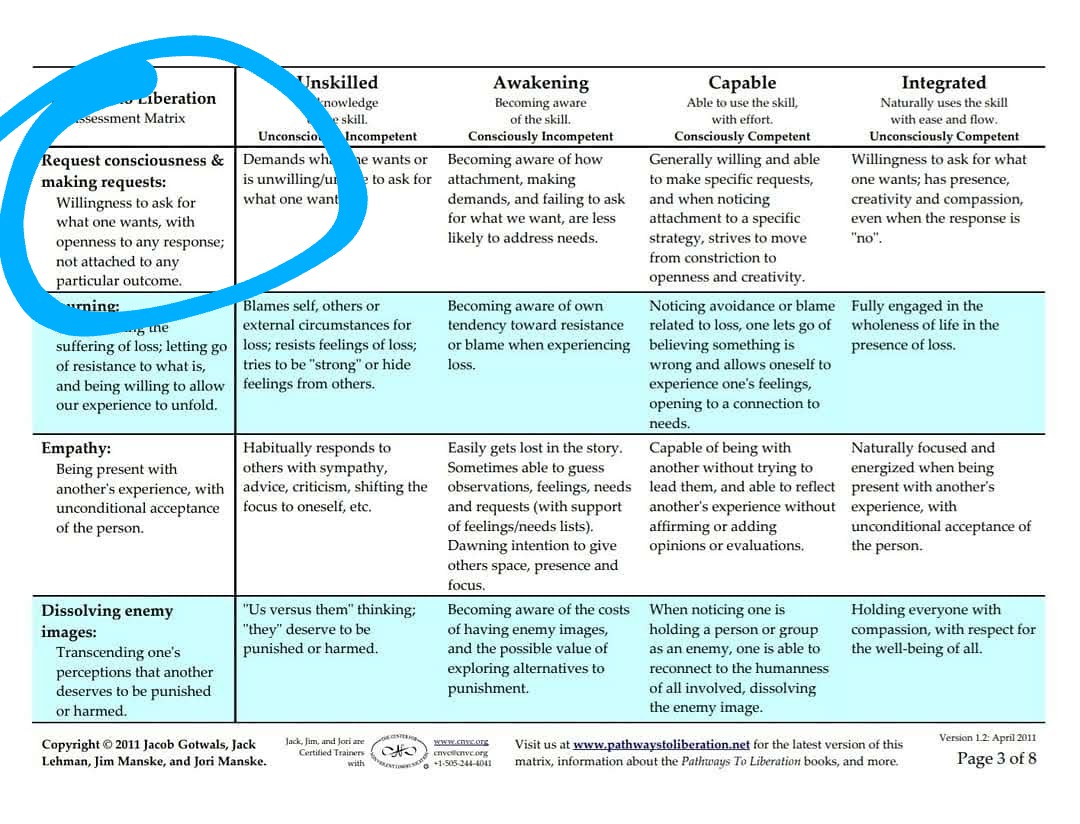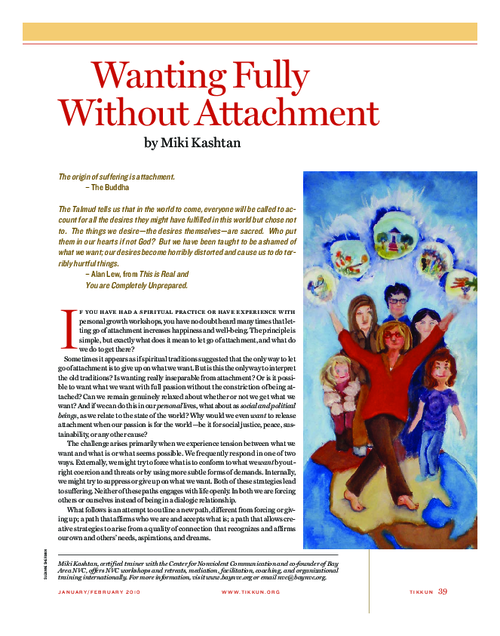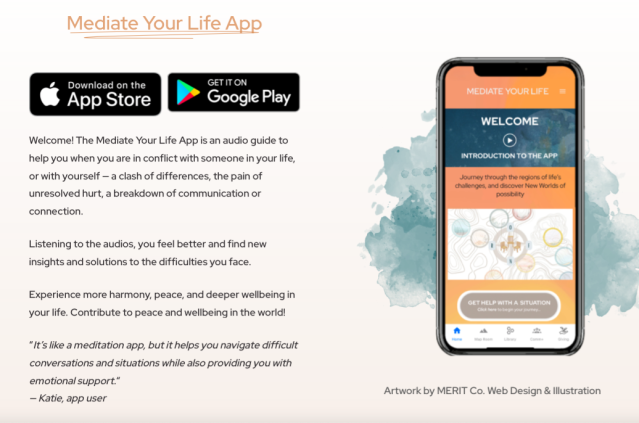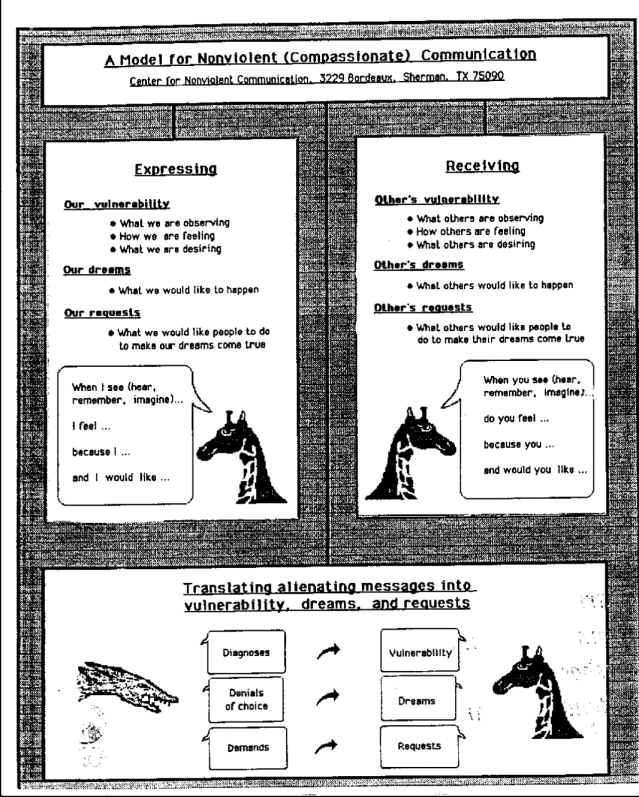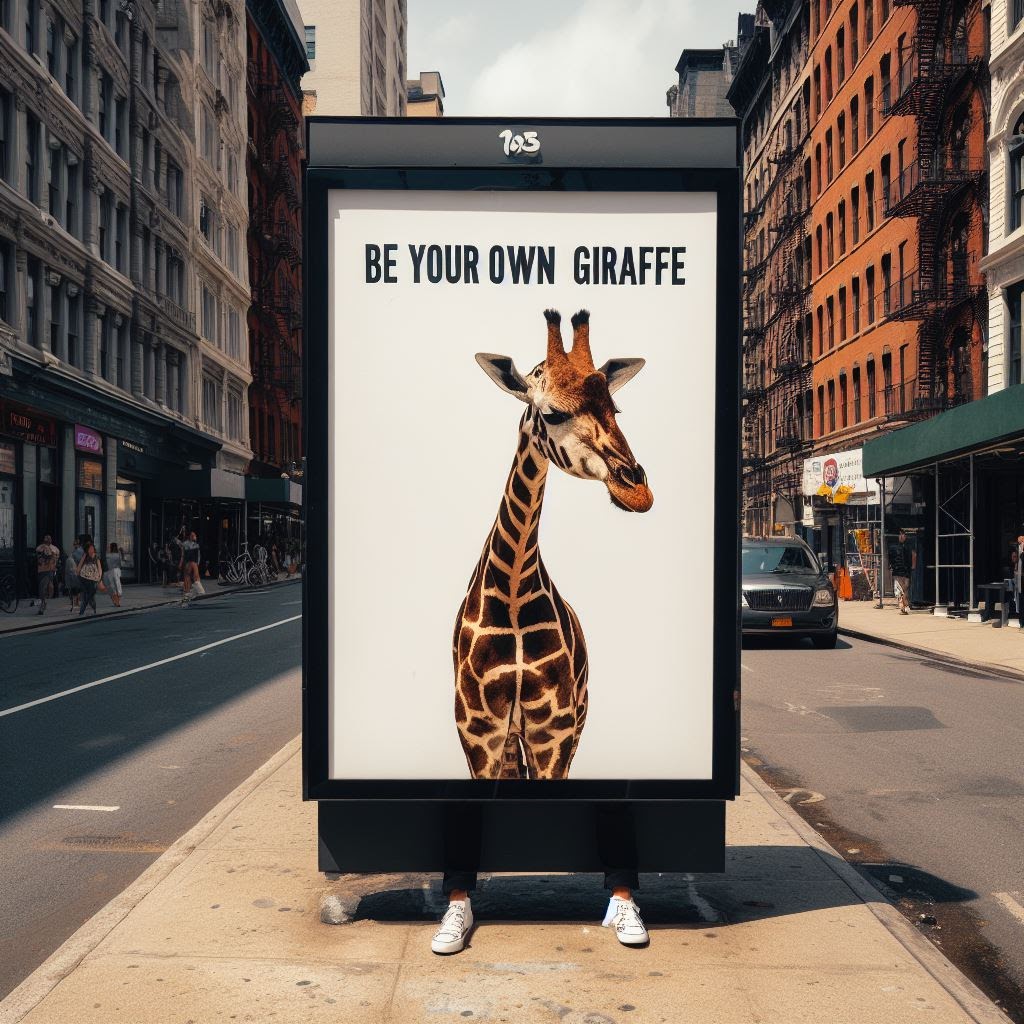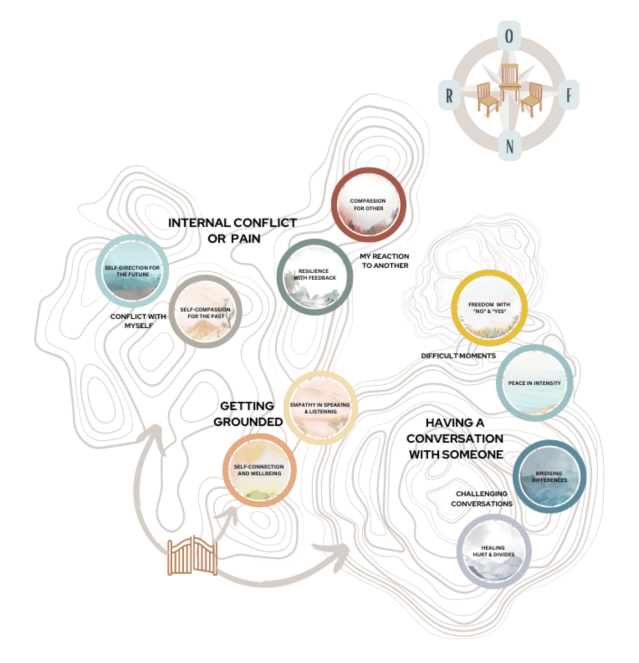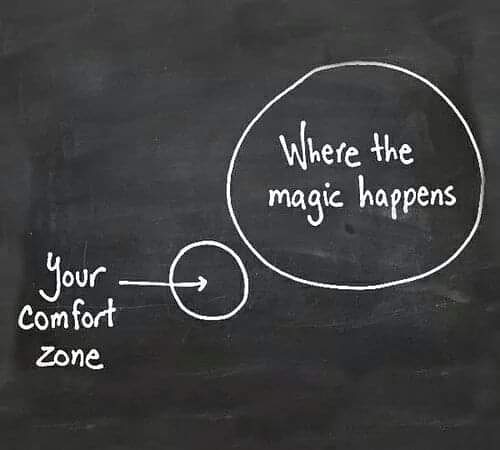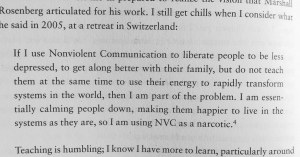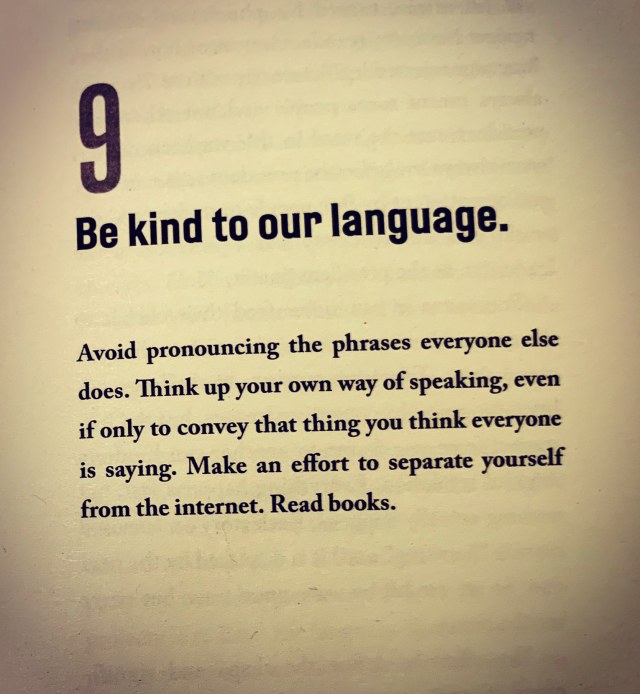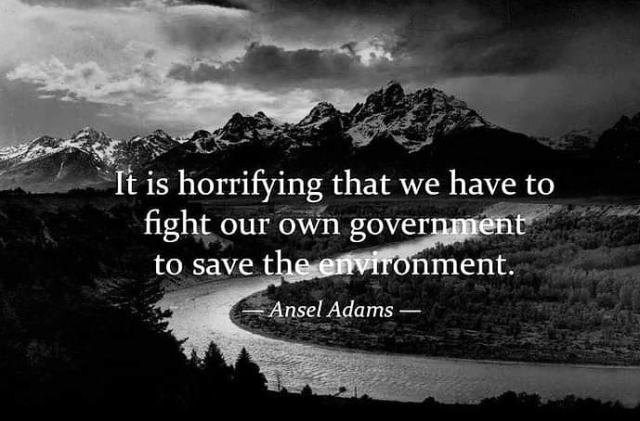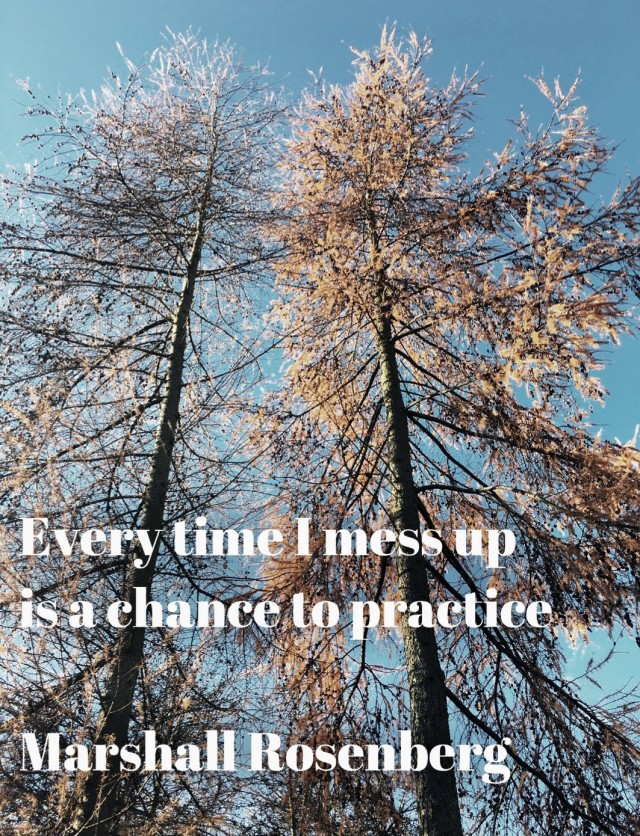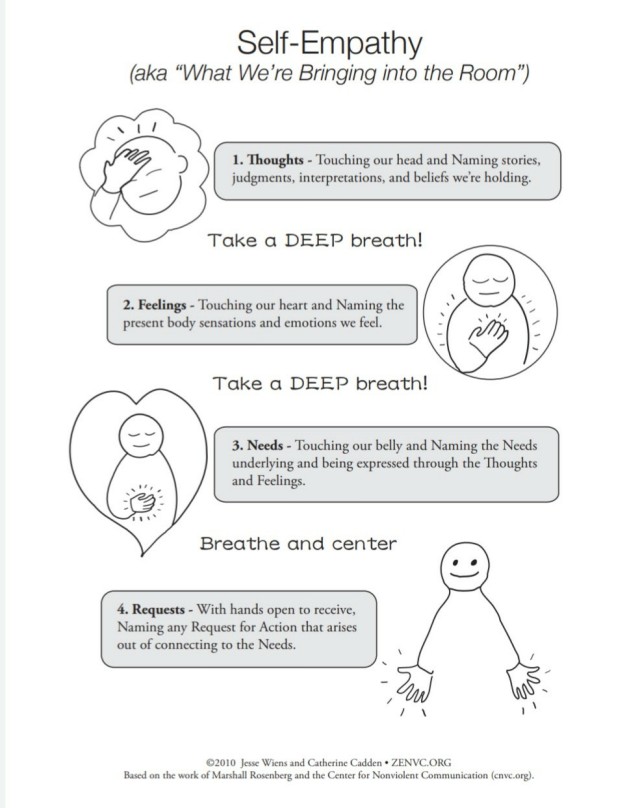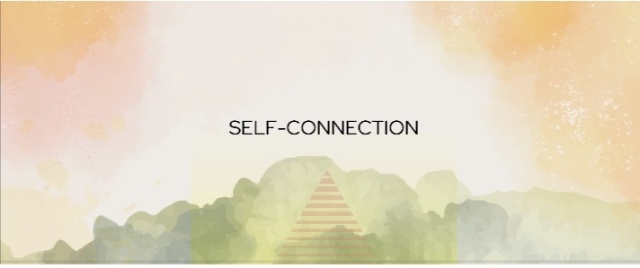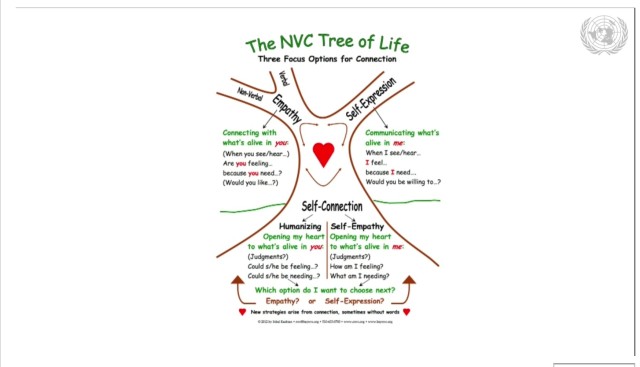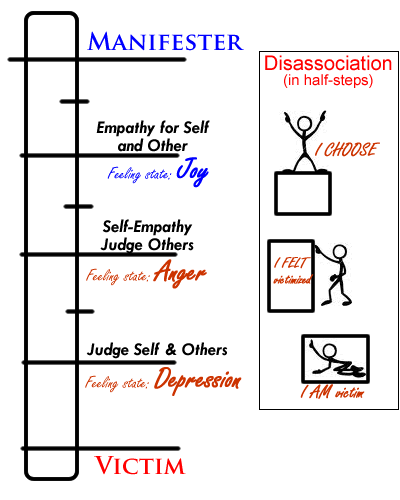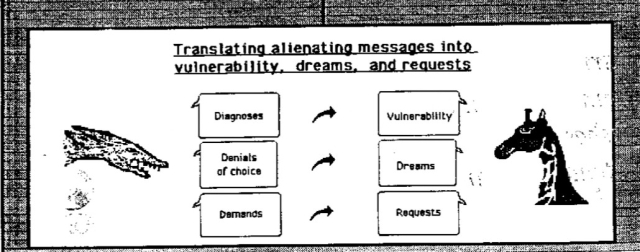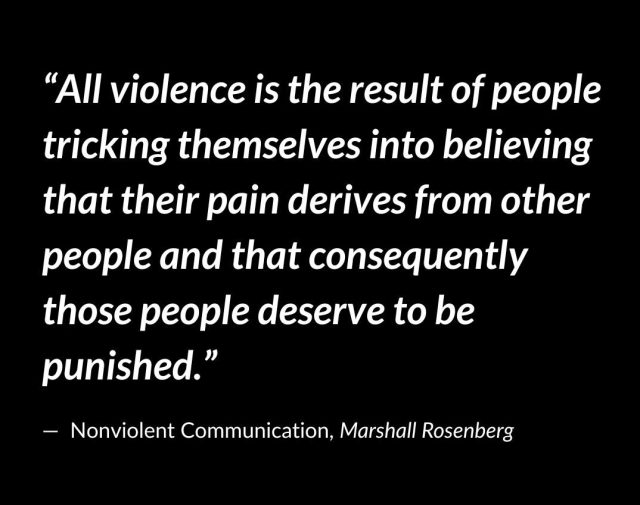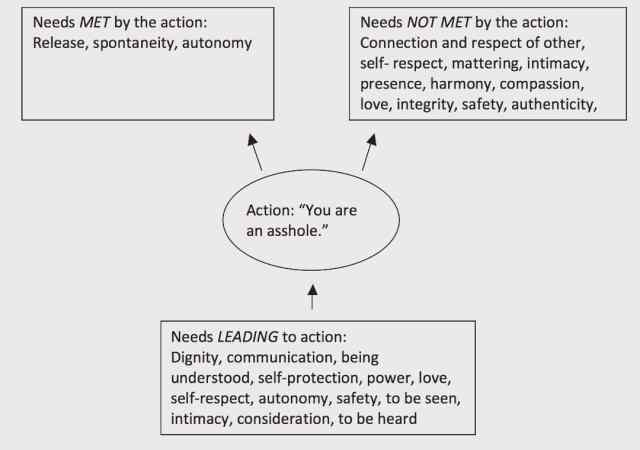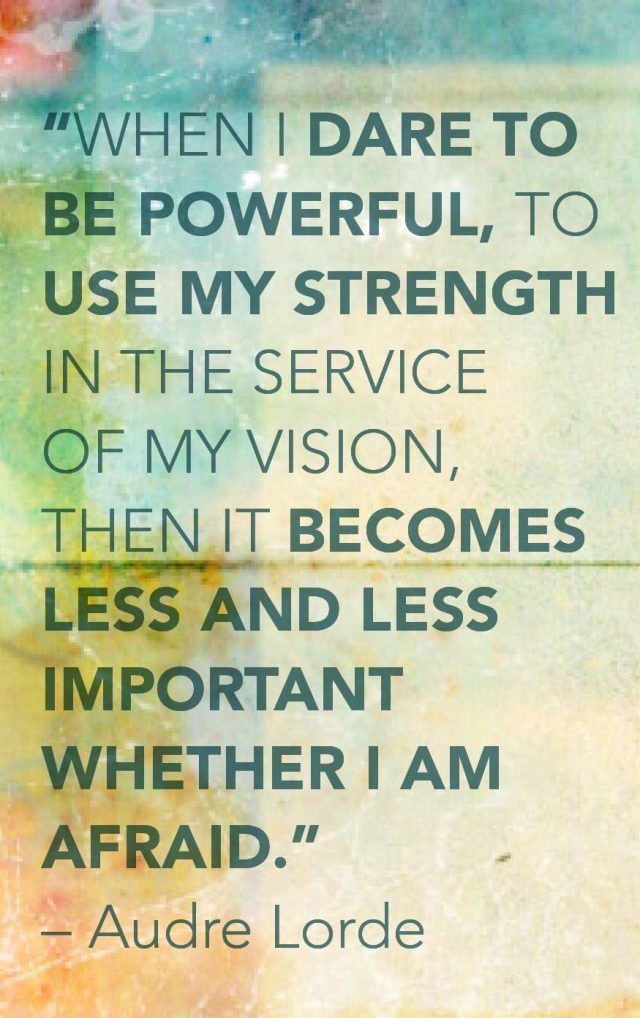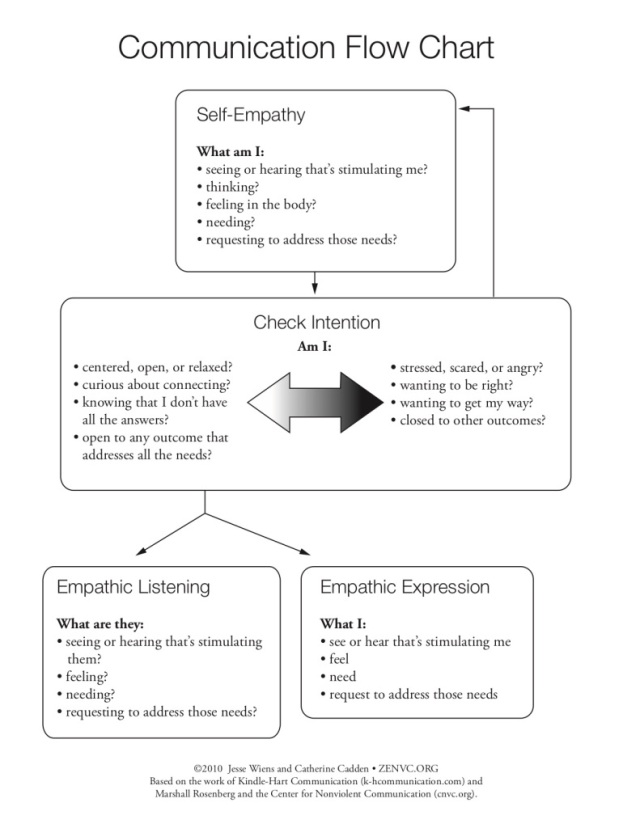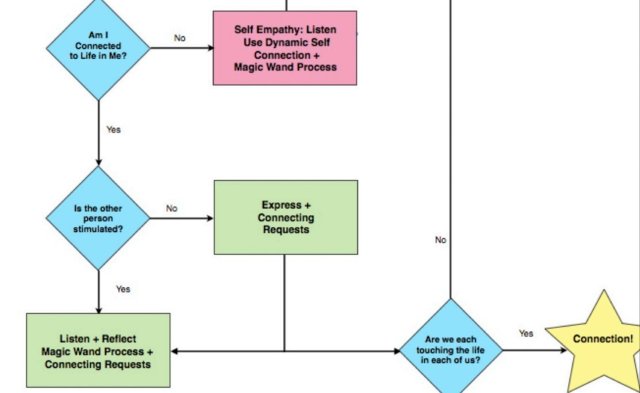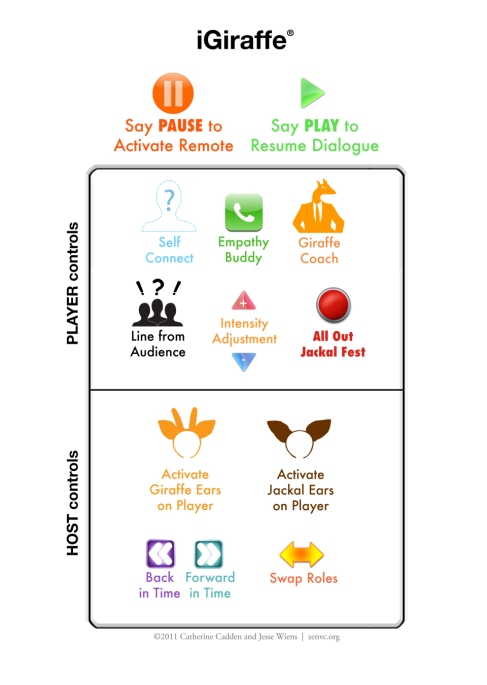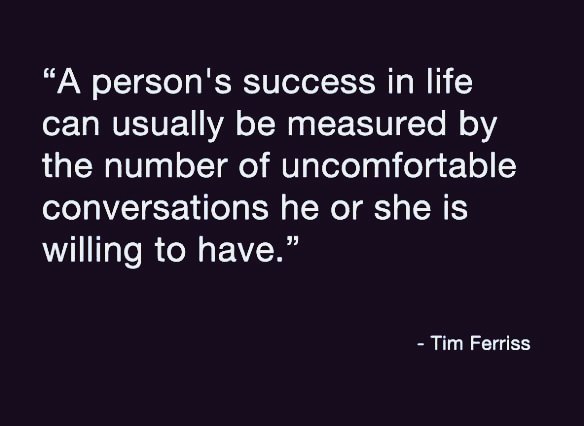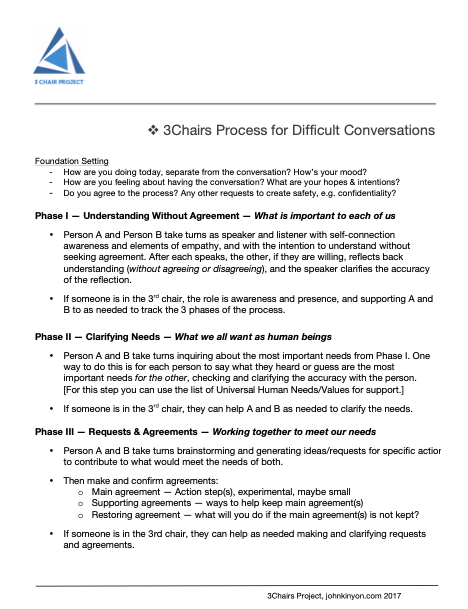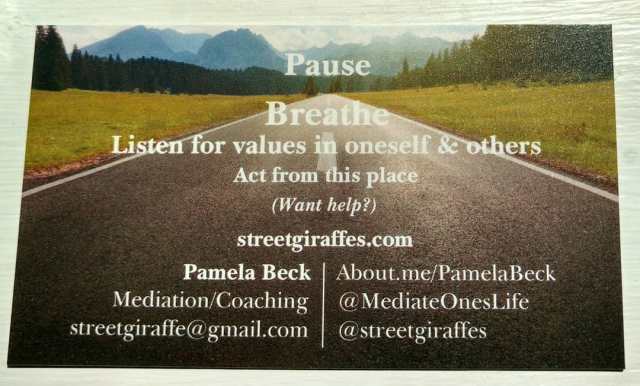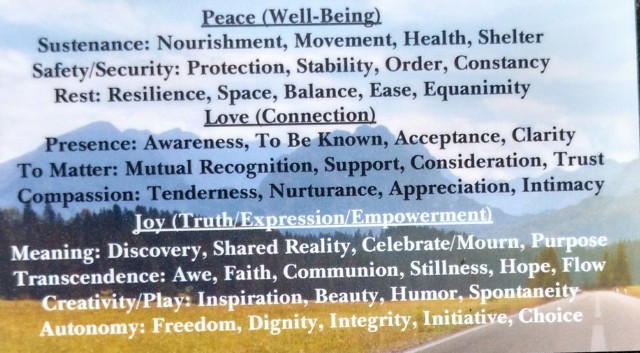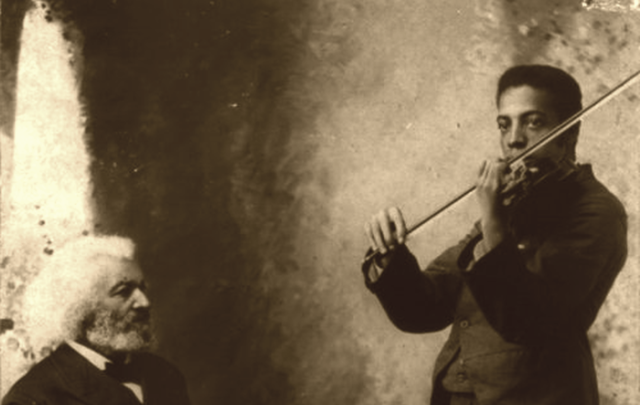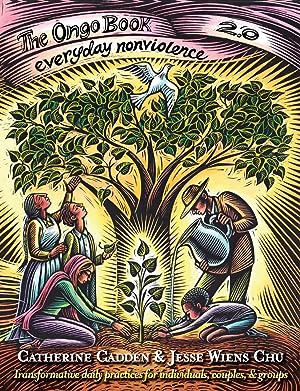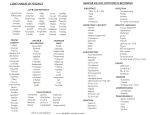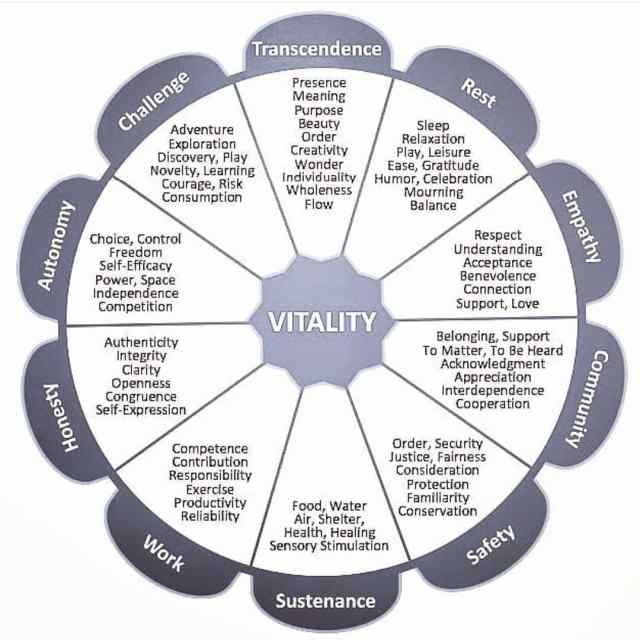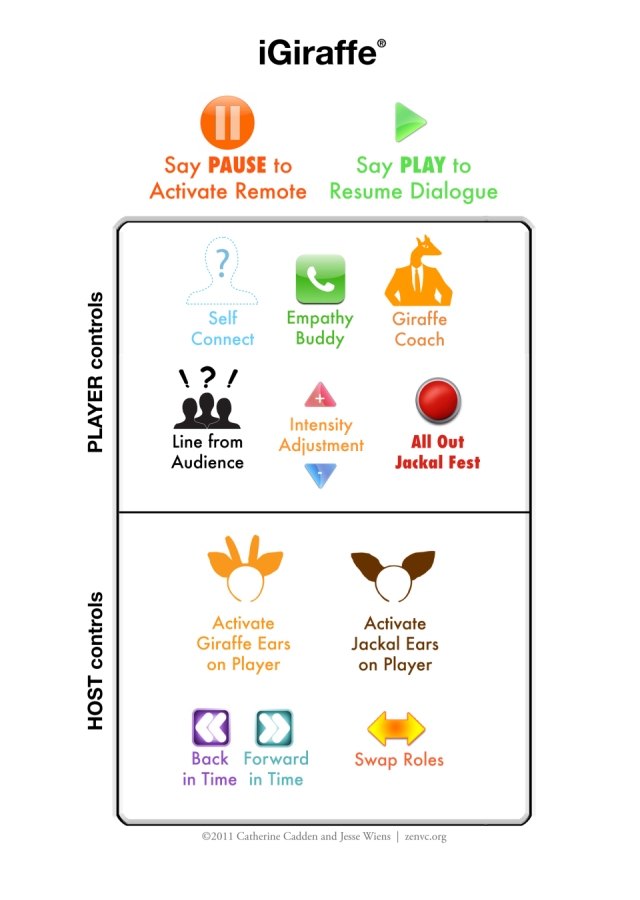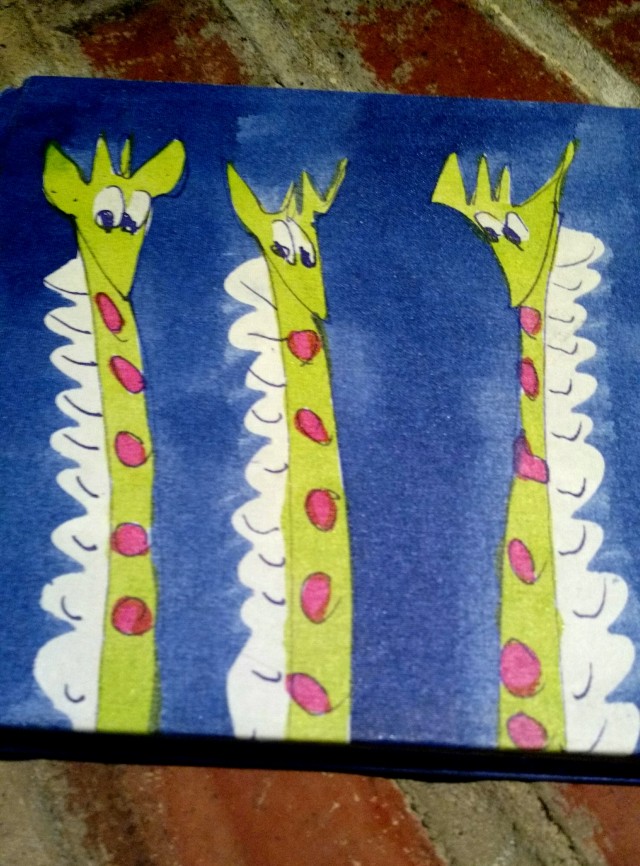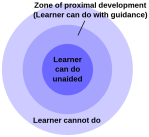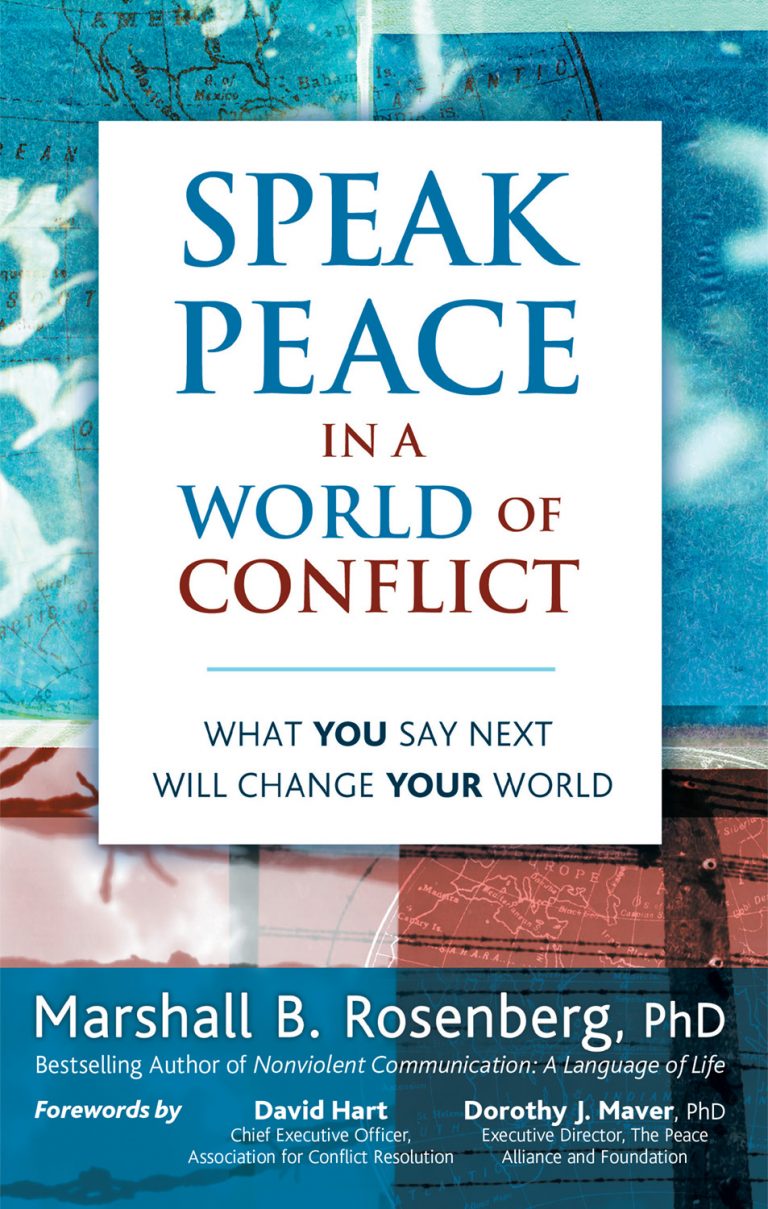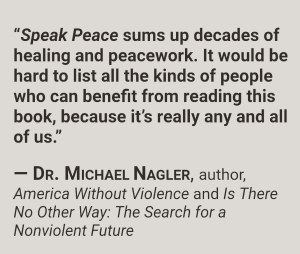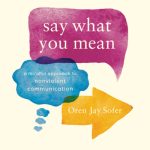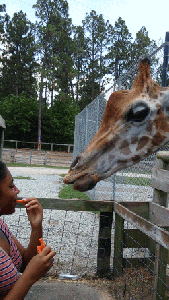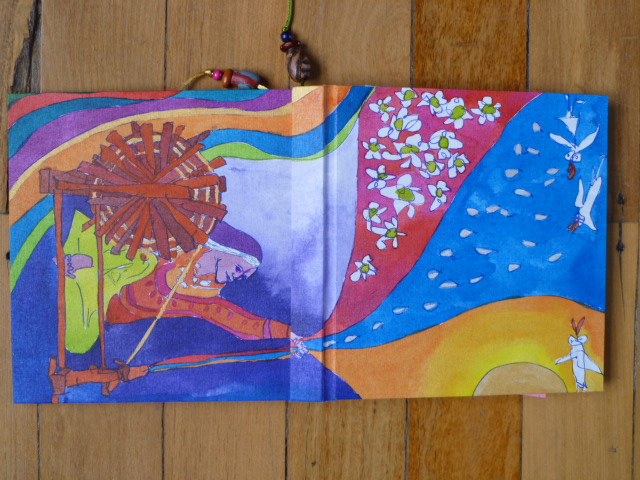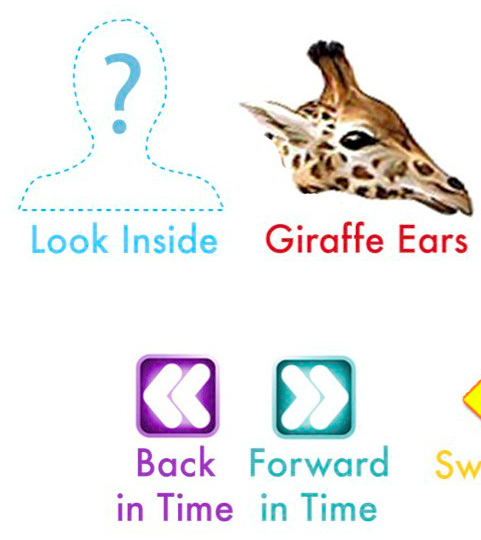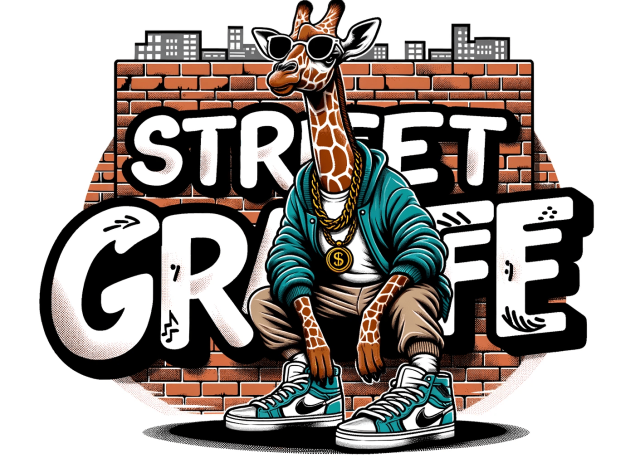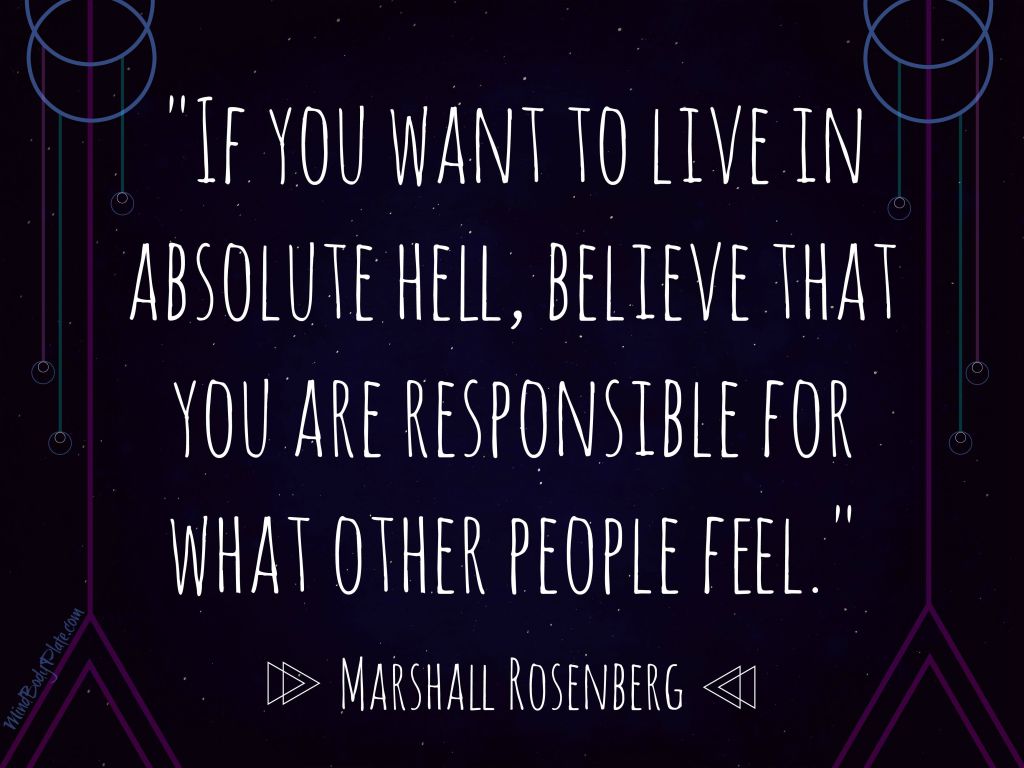When to Speak and When to Listen – Tricycle: The Buddhist ReviewHart–Kindle chart Communication Flow Chart
|
rage, disconnection and violence connection, compassion, peace |
||||
 The No Fault Zone In the video beneath, Newt Bailey describes NVC’s three dialogic choice-points. And when they may come into play…
|
| 1) Self-Empathy/Connection; 2) Honest-Expression; & 3) Empathic-Listening |
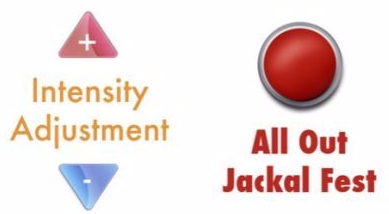
Two monologues do not make a dialogue.
~ Jeff Daly
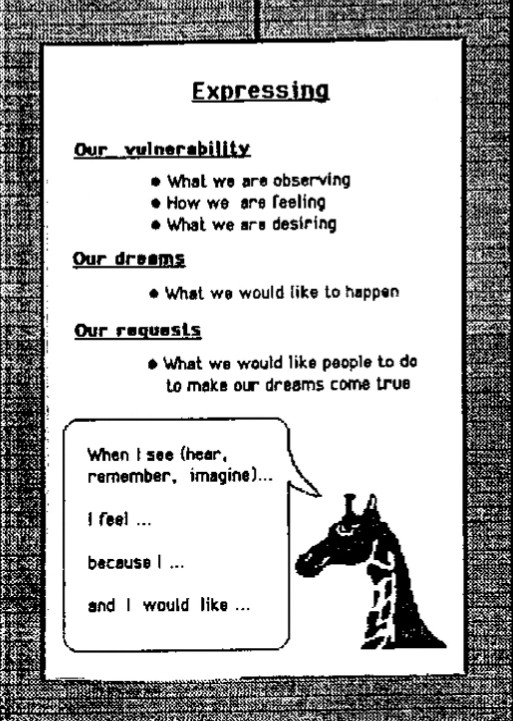
Earlier NVC Model (1.0 — circa 1980s) — Prior to “Universal Human Needs” cornerstone
Wanting Fully Without Attachment
In the video beneath, Newt Bailey describes NVC’s three dialogic choice-points. And when they may come into play…
Connected Communication – An introduction
Newt Bailey — paraphrasing from video clip above — on communicating based on the work of Marshall Rosenberg’s (NVC) model and when this tool, in our toolbox, may come into (relevance)/play:
“…To a large extent what I’m suggesting to people is that when they are in a stressful conversation or a fight, an argument, anything where they are finding that their communication is not going in a way that they would want, a lot of the time what I’m basically saying to people is, ‘look you can talk however you like, most of the time, you know if it works for you to say whatever you’re saying, but if you’re really clear that if it’s not working for you, or not working for the other person, then shrink down your available options down to just three options.’ That’s essentially what I’m saying to people.
And the practice is in actually, it’s maybe more difficult to shrink down and turn away from all the normal things you ordinarily do, blaming, persuading, criticizing people, making demands, telling stories, telling jokes, all of these other options, many options.
Three [Dialogic] Choices:
To shrink it down to just three options, and the three options are: How am I doing right now (self-connection)? How is the other person doing right now (call this empathy)? And the third choice, just expressing honestly what you got in touch with when you checked in with ‘how am I doing’… That creates a simplicity basically which also, strangely enough, creates much more potential for connection between you and the other person which will then lead, more frequently, to some kind of a useful outcome that you both enjoy…”
Three [Dialogic] Choices:

Conversations from the Heart: Zoom-Call/Podcast

John Kinyon‘s
Feelings-Needs-Sheet:
Peace (Well-Being)/Love (Connection)/Joy (Self-Expression/Meaning)

See also: Peace, Love & Joy

NVC’s 3 Choices & Breath, Body, Need (courtesy of @MediateYourLife)

via mediateyourlife.com/handouts
An example of a “choice-point” is discussed about three minutes into this recording:
Miki Kashtan/Conflict-Hotline

1980s NVC Model/Handout

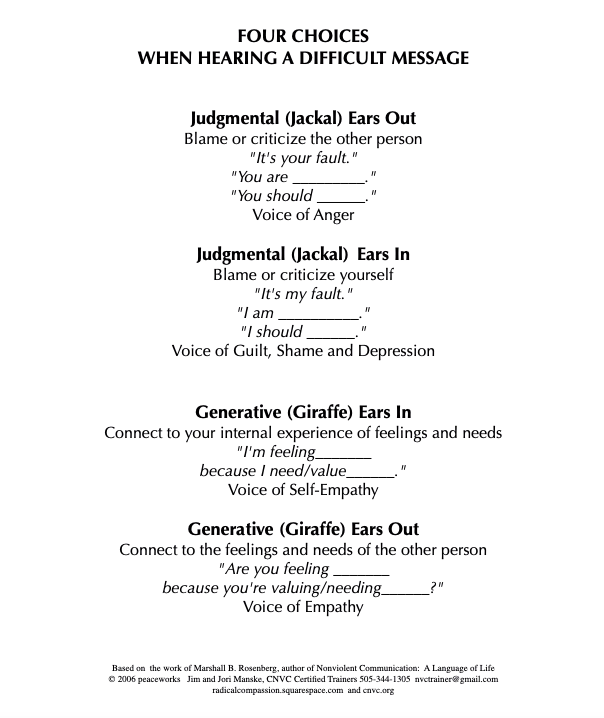
Interview: Oren Jay Sofer On Rest and Contemplative Practice
Skill-building exercises from Oren Jay Sofer’s book,
Say What You Mean: A Mindful Approach to Nonviolent Communication
When to Speak and When to Listen – Tricycle: The Buddhist Review
Practice: Choice Points
Excerpt: “To practice, choose someone with whom you feel relatively comfortable. This familiarity makes it easier to learn the tool. During a conversation, notice when you choose to speak. If you find yourself talking without having consciously chosen to do so, try stopping and leaving space for the other person to continue. Notice what it’s like to actively choose to say something rather than doing so automatically. Pay particular attention to any urgency or reluctance to speak or any sensations of internal pressure. Use that pressure as a signal to make a more conscious choice.”

Choice-Points
Try experimenting with these in subtle, unnoticeable ways during your everyday interactions:
- Practice paying attention to “choice-points” (p. 44)
- Practice pausing (p. 44)
- Practice modulating your pace (p. 48)
- Exploring relational awareness (p. 52)
From Oren Jay Sofer’s “Say What You Mean: A Mindful Approach to Nonviolent Communications“


Earlier NVC Model
More on listening…
(courtesy of ZENVC)
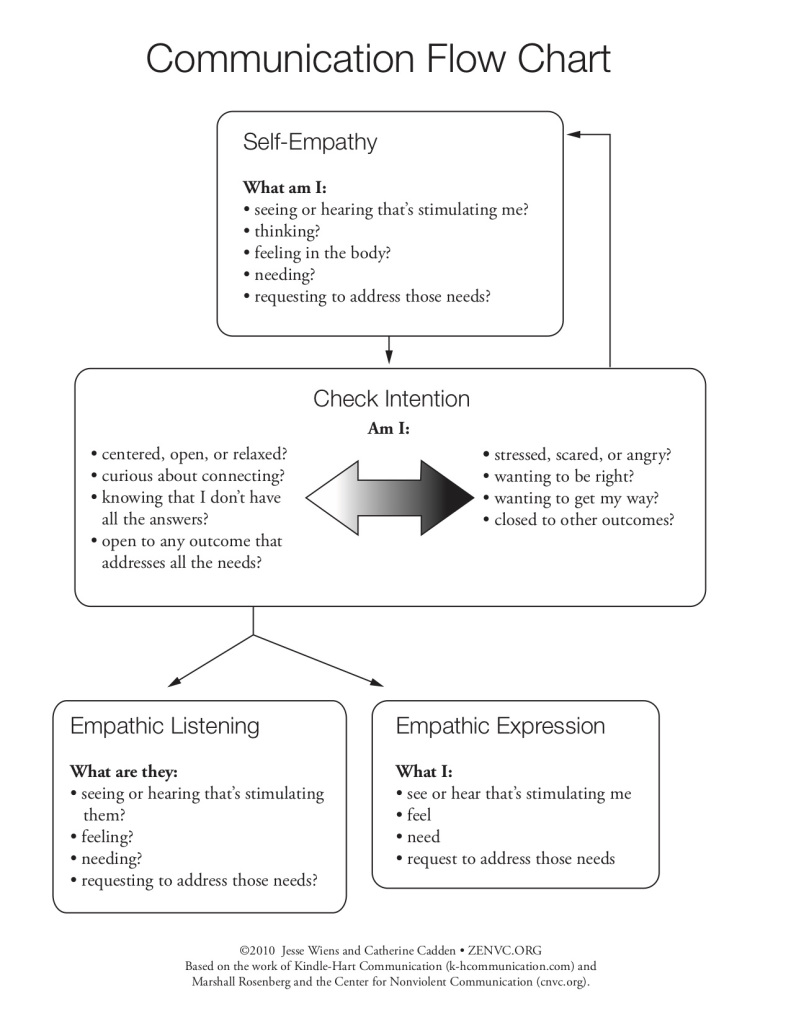
Note additional Communication Flow Charts here
Excerpt from “Say What You Mean” by Oren Jay Sofer:
Learning How to Listen
“…To listen entails a fundamental letting go of self-centeredness. We have to be willing to put down our own thoughts, views, and feelings temporarily to truly listen. It’s a wholehearted, embodied receptivity that lies at the core of both communication and contemplative practice.
Every conversation requires silence. Without it we can’t listen, and no real communication happens. The silence of listening isn’t forced or strained. It’s a natural quiet that arises from interest. When you want to smell a flower, what do you do? You get close, shut your eyes, and inhale slowly. Your mind grows still as you find the aroma. This is perhaps the most powerful way to listen: with full presence.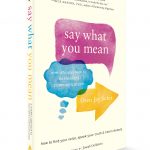
The wilderness has taught me a lot about how to listen. The ancient steadiness of an old-growth redwood, the stillness of a high mountain lake, or the vibrant music of a stream—all have the power to quiet the mind and still the heart. In the face of such wonders, our mental chatter falls away. What remains is a state of pure listening.
We learn this kind of deep listening in meditation, discovering the stillness of awareness. With practice we can access it in the midst of conversation. The more we learn how to listen, the more available we become for others and for our life in general.
This is just as important for the wonderful moments as it is for the difficult ones. True listening allows us to appreciate the presence of a loved one or to let kindness touch us. This kind of receptive listening can nourish the spirit, heal divisions, and lead to new possibilities.”
Article, in its entirety, can be found here
See also: Presence, Intention, Attention
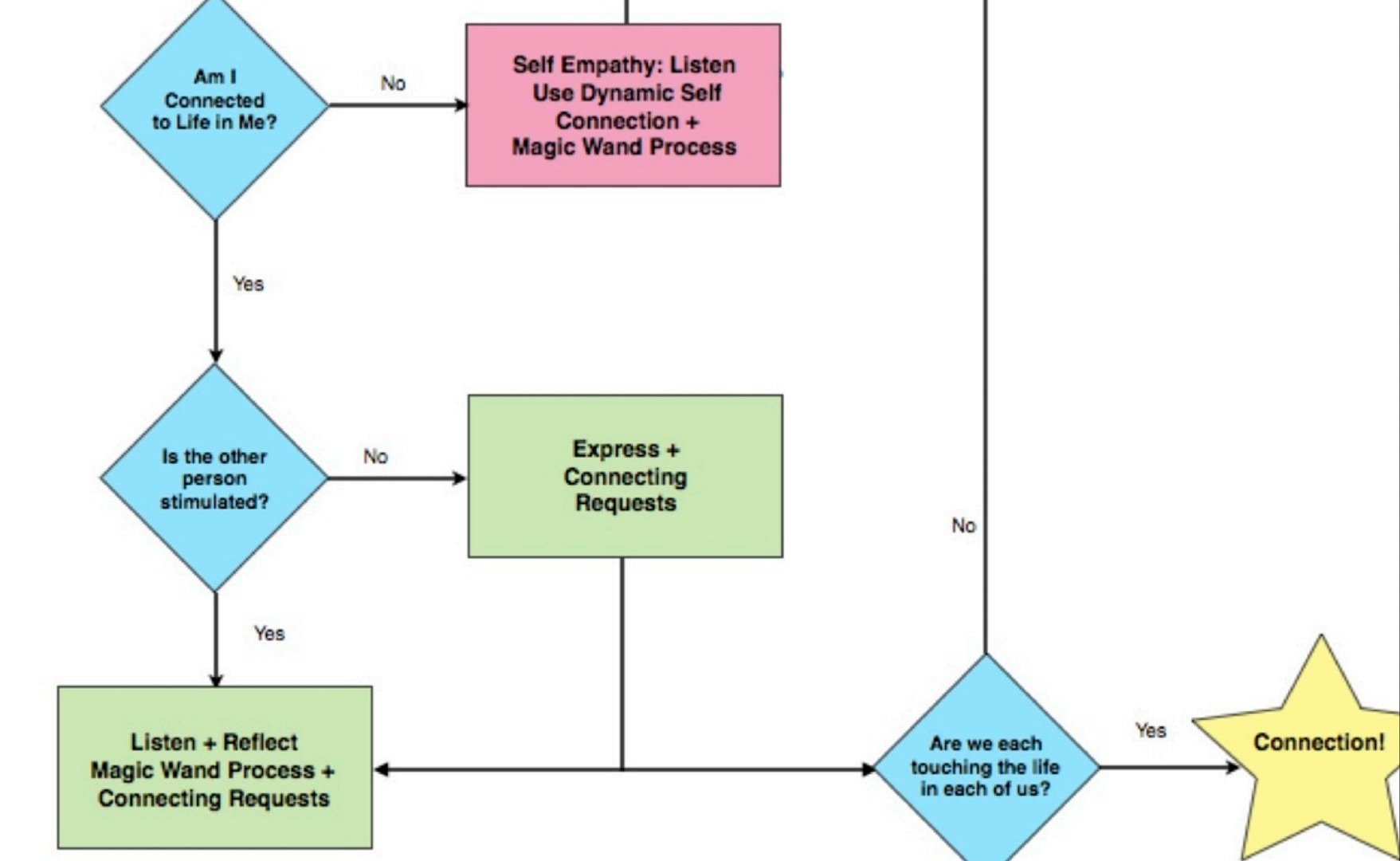
Courtesy of Linnaea Marvell
Wikipedia: Unconditional positive regard, a concept developed by the humanistic psychologist Carl Rogers, is the basic acceptance and support of a person regardless of what the person says or does…[1]

Empathy: to empower “what’s alive”, whether in oneself or in another, with unconditional positive regard
Excerpt (via Psychology Today): “What it means is that you respect the person as a human being with agency to choose how to respond to their situation and that no matter how dangerous or dysfunctional they seem to be they are doing their best. This rests on the particular philosophical view of human nature associated with the psychologist Carl Rogers, the founder of client-centered therapy.
First, Rogers’ theory was that human beings have an innate urge towards socially constructive behavior which is always present and always functioning at some level. Second, Rogers’ believed that each person had a need for self-determination; and the more a person’s need for self-determination is respected, the more likely their innate urge to be socially constructive will take hold. For Rogers this provided insight into the best way to create nurturing environments at home, school, workplace and the therapy room.
Unconditional positive regard therefore means valuing the person as doing their best to move forward in their lives constructively and respecting the person’s right to self-determination no matter what they choose to do.
That doesn’t mean that you need to like the person or approve of what they do. Nor does it mean that you have to simply put up with what they do if you see it as dangerous in some way.” (continues here)
Wanting Fully Without Attachment
Miki Kashtan (excerpt): “…If you have had a spiritual practice or have experience with personal growth workshops, you have no doubt heard many times that letting go of attachment increases happiness and well-being. The principle is simple, but exactly what does it mean to let go of attachment, and what do we do to get there?
Sometimes it appears as if spiritual traditions suggested that the only way to let go of attachment is to give up on what we want. But is this the only way to interpret the old traditions? Is wanting really inseparable from attachment? Or is it possible to want what we want with full passion without the constriction of being attached? Can we remain genuinely relaxed about whether or not we get what we want? And if we can do this in our personal lives, what about as social and political beings, as we relate to the state of the world…” (continues here)

@nmbailey: “I have a sense that 90% of Nonviolent Communication is about ‘Self-Connection.’ When using this expression, I’m referring to the practice or process that lives at the root of Inbal Kashtan’s Tree of Life diagram…” (continues)
More here
Inbal Kashtan’s Tree of Life at the United Nations:

Inbal Kashtan’s NVC Tree of Life with U.N. insignia as presented at the United Nations on May 17, 2019 (#NVC2UN)

See also:
3Chairs & Choice-Points
John Kinyon‘s
[NVC/Mindfulness]
Mediate Your Life App:


The Mediate Your Life app is free and available to everyone who wants it.
Additionally, please visit: NVC Mediation & MediateYourLifeApp.com/resources
Mary Mackenzie via NVC Academy:
Trainer Tip: People’s choice of words may be difficult to hear. In fact, we may feel downright aggravated by them. Whether we enjoy these statements or not, we can begin to recognize that behind each statement is a desire to meet needs, either by saying please or thank you. In this way, we are more likely to feel compassion because we have connected to their humanness. Listen for the please or thank you in your conversations today.
Dialogue sculpture by Cezary Stulgis (2004), Queen Street, Brisbane

(Courtesy of Kgbo via Wikimedia Commons)


